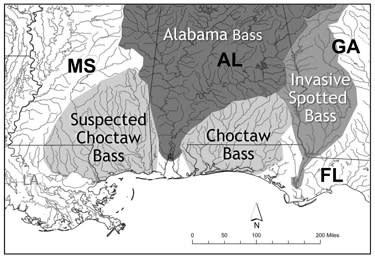The Southeast’s New Bass Species, and Where to Find It
OutdoorHub Reporters 05.13.13

Last week the Florida Fish and Wildlife Conservation Commission (FWC) announced the discovery of a new bass species, the Choctaw. Also known by its pending scientific name, Micropterus haiaka, the bass had been previously grouped with the similar, but genetically different spotted bass. According to Fox News, the Choctaw is the tenth species of bass to be discovered so far. Such an announcement is sure to perk the interests of anglers, but where can this elusive species be found?
“We didn’t set out to find a new species,” said Mike Tringali, who lead the discovery at FWC’s Fish and Wildlife Research Institute. “It found us.”
FWC scientists found the first specimen in Florida’s Chipola River, a tributary of the Apalachicola River. Researchers were conducting a study of game fish genetics when they captured it in 2007, but the realization that the Choctaw is its own independent species came years later. Since then the bass has been found in the river systems of Alabama and Florida, predominantly the Choctawhatcee River. Scientists suspect that the Pearl River, which runs through Mississippi and Louisiana, also contains the bass. The species typically lives near the upper source of rivers and streams. Below is a map of some suspected Choctaw habitats:
Choctaw bass is very similar in appearance to spotted bass and average around 14 inches in length. Some ways to tell Choctaw from spotted bass include counting scales, fin rays, or gill rakers. While not a competitor for the largest bass species, adventurous anglers may find the hunt for a new species a special challenge. Just because it is small does not mean the bass is timid, the Choctaw maintain a niche dominance in their respective environments. Areas with Choctaw bass often do not contain other bass species.
Wildlife officials are currently working to ensure that the species remains healthy and are preparing new conservation management plans.



